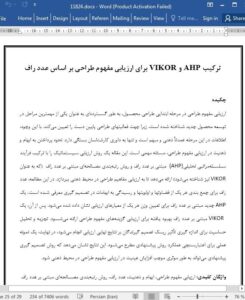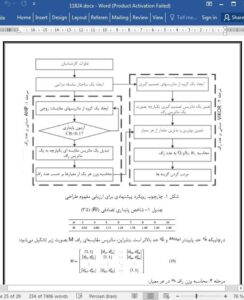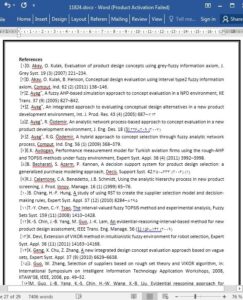Abstract
Design concept evaluation at the early stage of product design has been widely recognized as one of the most critical phases in new product development as it determines the direction of the downstream design activities. However, the information at this stage is mainly subjective and imprecise which only depends on experts’ judgments. How to handle the vagueness and subjectivity in design concept evaluation becomes a critical issue. This paper presents a systematic evaluation method by integrating rough number based analytic hierarchy process (AHP) and rough number based compromise ranking method (also known as VIKOR) to evaluate design concepts under subjective environment. In this study, rough number is introduced to aggregate individual judgments and preferences and deal with the vagueness in decision-making. A novel AHP based on rough number is presented to determine the weight of each evaluation criterion. Then an improved rough number based VIKOR is proposed to evaluate the design concept alternatives. Sensitivity analysis is conducted to measure the impact of the decision makers’ risk to the final evaluation results. Finally, a practical example is put forward to validate the performance of the proposed method. The result shows that the proposed decision-making method can effectively enhance the objectivity in design concept evaluation under subjective environment.
1. Introduction
New product development (NPD) has been considered as one of the corporate key functions and a critical factor to maintain competitiveness in a fast-growing global market under highly competitive environment [19,23]. The rapid advances in technology, fast changing customer needs, combined with increasing market competition force the companies to develop new product with shorter time, lower cost and higher quality [34]. However, it is a process involving uncertainty and risk. To resolve the stochastic problem and ensure the success of the product development, people should take into account these factors and constraints as early as possible and make accurate decisions. A bad selection of final design concept for a particular product may not only increase the development cost, but also cause additional modification or even endanger the success of the overall NPD. It is reported that up to 70–80% of the whole product development cost is determined at early design stage [29]. In addition, the deficiencies at this stage can hardly be compensated in the subsequent design process. Due to its important role on the consequent design activities, the final design concept evaluation in the early product development is perhaps the most crucial stage among NPD.
5. Conclusion
To deal with the subjectivity in design concept evaluation, this paper proposes an integrated rough AHP and rough VIKOR methodology to handle the vagueness and subjectivity. In this study, rough number is introduced to aggregate individual judgments and priorities and measure vagueness. It is firstly used to integrate with AHP to calculate the relative importance for each criterion. Then it is employed to combine with VIKOR to arrange the alternatives. By combining with rough AHP and rough VIKOR, both relative importance of each criterion and final alternatives ranking are determined. Finally, the proposed approach is applied in a practical case study to assist design concept evaluation. To further evaluate the risk of decision makers’ perception, sensitivity analysis is conducted to the case study. Then the proposed approach is used to compare with crisp AHP–VIKOR, fuzzy AHP–VIKOR and crisp AHP–TOPSIS. By comparing with these methods, the proposed method can effectively reflect the true perception of the decision maker. The results are more objective and the vagueness is quantified and addressed properly.
The proposed rough number based approach is also applicable to many other group decision-making areas. In the future, many other methods such as ANP and their integrated models will be combined with rough number to extend the application areas and tackle vagueness under subjective environment in decisionmaking.











